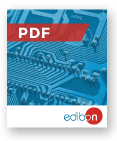
NEW Mechanics leaflet
With our complete Mechanics area, EDIBON gives answer to the academic demand for teaching and learning concepts of Mechanics, in an easy and practical way.
DownloadMechanics is the scientific discipline that studies the physical phenomena that affect the elements of nature. Although it is called mechanics, it actually includes both classical and quantum mechanics, which are two of the fundamental pillars of modern physics.
View moreClassical mechanics deals with the study of the rigid body as well as systems of a finite or infinite number (continuous medium) of degrees of freedom, while quantum mechanics studies systems of small scale or little energy.
As in any experimental science, every mechanical study of a body involves an analysis process, from a physical and mathematical perspective, and experimentation. But, unlike other scientific disciplines, in mechanics it is not so complex to study the theoretical behavior interpreted in a real system.
Thanks to contributions of many scientists, such as Newton, Lagrange, Hamilton or Schrödinger, some fundamental laws or principles of mechanics can be established:
Given the extension of its field of study, it is convenient to mention the most representative fields:
Due to the constant evolution of the industry, the branches of mechanical engineering, automotive and automobile engineering, calculation of structures, development of machinery, as well as their installation and maintenance,are the most developed today.
View Products7.1.- MECHANICAL ENGINEERING
7.2.- AUTOMOTIVE MECHANICAL ENGINEERING
7.3.- MATERIALS ENGINEERING
7.4.- INSTALLATIONS AND MAINTENANCE